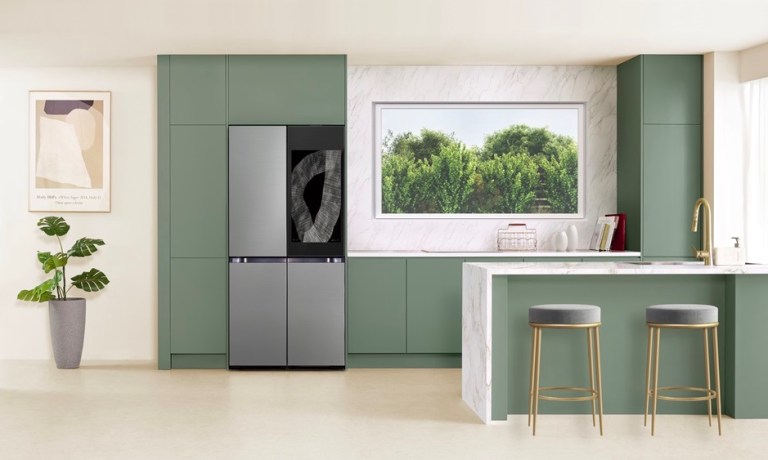Samsung Announces New Connected Kitchen Products as Consumers Increase Digital Engagement

With consumers increasingly expecting connectivity in every part of their lives, Samsung is stepping up its smart kitchen devices, creating potential in-home contextual commerce opportunities down the line.
The company announced a range of new products to be showcased at the upcoming CES 2024 event in Las Vegas, including refrigerators that can recognize foods using artificial intelligence vision. Additionally, these fridges can keep track of food expiration dates and monitor water filter status.
This kind of technology opens the door to new forms of in-kitchen contextual commerce. In an interview with PYMNTS last year, Kevin Yu, CEO of connected recipes company SideChef, discussed the utility of image recognition capabilities in smart kitchen devices both in terms of removing friction for consumers and creating sales opportunities for grocers and brands.
“Take image recognition,” he said. “Gosh, I don’t know what to do with these ingredients in my fridge. I just want to take a picture. Tell me what I can make. You know, what am I missing? OK, and send it to me. How long is it going to take? 30 minutes? OK. It’s going to cost this much? Great. Decision done.”
Shopping opportunities are increasingly making their way into consumers’ kitchens. Last month, for instance, GE Appliances announced a collaboration with Kroger, introducing a new feature for select Wi-Fi-connected wall ovens and ranges through which the LCD screens display recipes from Kroger and select consumer-packaged goods (CPG) brands, enabling one-tap add-to-cart capabilities.
Connected device ownership is on the rise. The August edition of PYMNTS Intelligence’s How We Will Pay Report, “Multitasking Consumers Want to Shop — and Work — at the Same Time,” revealed that 9% of consumers own smart fridges, up from 5% in 2019.
Plus, many consumers use their connected devices to shop while doing other activities, the study found. For instance, 27% of multitaskers shopped while at work, and 25% did so while they were eating.
This uptick in connected device ownership and the concurrent rise of multitasking creates new opportunities for grocers and food brands.
“Recipe content has always been incredibly shoppable,” Jason Young, then president (now a board member) of digital shopper marketing platform Chicory, told PYMNTS in 2021. “What’s happening is we now have the pipes all connected so that you can go very directly from content like recipes into transactional moments. But if you look at recipes historically, they’ve always been a point of inspiration, a point of kicking off the food shopping process.”
Plus, consumers are increasingly engaging with grocers via digital channels. According to the PYMNTS Intelligence survey “Consumer Interest in an Everyday App,” which was based on responses from more than 2,200 U.S. consumers, 61% of those who shopped for groceries in the previous month did so via connected devices at least some of the time.
Samsung’s new connected kitchen products align with grocery shoppers’ growing demand for connectivity and digital convenience. The integration of shopping capabilities within the kitchen opens up new possibilities for grocers and food brands to engage with consumers. As the ownership of connected devices continues to rise, the kitchen could become a hub for shopping.